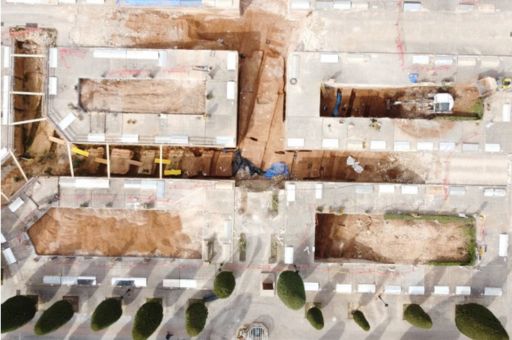Three of the victims were located in Manacor, and the other three in Formentera
The analysis of remains found in the mass graves at Son Coletes, Manacor, carried out by the technical team from Aranzadi-Atics during the excavations conducted between 2020 and 2023 as part of the 2nd, 3rd, and 4th Graves Plans approved by the Technical Commission on Graves and the Disappeared of the Government of the Balearic Islands, has led to the identification of three new victims: Serafí Vives Servera, Bartomeu Fornés Bordoy, and Gabriel Picornell Femenias.
Likewise, analysis of remains recovered from the graves in the cemetery of Sant Francesc Xavier in Formentera—during the second phase of excavations under the Fourth Graves Plan—has allowed for the identification of three additional victims: Antonio Sánchez Capilla, Francisco Delgado Machío, and Manuel Gordillo Vega.
All identifications were made possible through the analysis and comparison of genetic profiles conducted by the BIOMICs laboratory at the University of the Basque Country, the ancient and modern DNA laboratory at the Autonomous University of Barcelona, and the Genomics Service at Pompeu Fabra University.
TDB keeps you informed. Follow us on: Facebook, Twitter and Instagram
Remains of Six New Victims Identified During the Fourth Graves Plan in the Cemeteries of Son Coletes and Sant Francesc Xavier
Serafí Vives Servera
Identified through a bone sample recovered during the third excavation campaign (2023) in Son Coletes, which matched a DNA sample from his son. The identification was made possible thanks to the compatibility of historical, archaeological, and anthropological data.
Born in Son Servera in 1905, Vives was a sworn guard and was executed along with his father on August 17, 1936, at age 31.
Bartomeu Fornés Bordoy
Identified from a bone sample taken during the third excavation campaign (2023) in Son Coletes, matched with a DNA sample from his son.
Born in Manacor in 1896, Fornés took refuge with his family during the Bayo landing in 1936. He was injured, taken to the hospital, and later arrested and executed at Son Coletes on August 27, 1936, at the age of 40.
Gabriel Picornell Femenias
Identified using bone samples recovered during the 2020 and 2021 excavations in Son Coletes, matched with DNA from previously identified relatives.
Born in Palma in 1906, Picornell was a stonemason and member of the Communist Party of Spain (PCE). He is believed to have been imprisoned in Can Mir and was executed between 1936 and 1937 in Son Coletes.
Francisco Delgado Machío
Identified from remains recovered during the second excavation campaign (2023) in the Sant Francesc Xavier cemetery in Formentera, matched with DNA from his late son.
Born in Badajoz on November 8, 1890, Delgado was a labourer and head of the local municipal guard during the Republic. He was transferred from Badajoz prison to the Formentera penal colony in 1941, accused of rebellion, and died that same year from illness at age 50.
Antonio Sánchez Capilla
Identified from remains recovered during the second excavation campaign (2023) in Formentera, matched with DNA from his two daughters.
Born in Badajoz in 1891, Sánchez was a labourer affiliated with the PSOE and UGT, and served in the Republican army in 1939. After being imprisoned in Castuera and Almendralejo, he was convicted of military rebellion and sent to the Formentera penal colony in 1941, where he died that year from illness.
Manuel Gordillo Vega
Identified from remains recovered in the 2023 excavation in the cemetery of Sant Francesc Xavier, Formentera, matched with DNA from his daughter.
Born in Badajoz in 1885, Gordillo was a labourer and member of Esquerra Republicana. In 1941, at age 56, he was transferred from Badajoz prison to the Formentera penal colony, where he died the same year due to illness.
To date, 67 victims of Francoist repression have been identified in the Balearic Islands thanks to DNA analysis and anthropological studies.
